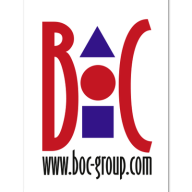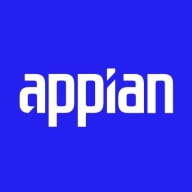

Appian and ADONIS are key competitors in the business process management market. Appian appears to have the edge due to its extensive automation and integration features, while ADONIS is more limited in these aspects.
Features: Appian stands out for its low-code development, real-time data access, and seamless integration options, making it suitable for diverse applications. It is also appreciated for rapid deployment and efficient process automation. ADONIS, renowned for its comprehensive process documentation and analytics, falls short in automation and AI integration compared to Appian.
Room for Improvement: Appian users suggest enhancements in user interface customization and expanded third-party tool integration. There are also requests for better pricing models and reduced certification costs. ADONIS users desire improved user-friendliness and more robust automation features, noting difficulties in integrating business processes and managing users.
Ease of Deployment and Customer Service: Appian offers flexibility with deployment options in public, private, and hybrid clouds, gaining positive feedback for its technical support. ADONIS, which supports on-premises and private cloud, might feel less flexible. Both platforms have responsive support, but Appian's diverse deployment choices provide additional implementation options.
Pricing and ROI: Appian has a higher perceived cost due to complex licensing, yet its comprehensive features deliver a justified ROI, particularly for large-scale implementations. ADONIS, more moderately priced, appeals to smaller budgets, offering cost-effectiveness. Both tools enhance efficiency, but Appian's broader feature set often results in superior ROI prospects.
| Product | Market Share (%) |
|---|---|
| Appian | 5.3% |
| ADONIS | 2.7% |
| Other | 92.0% |


| Company Size | Count |
|---|---|
| Small Business | 3 |
| Midsize Enterprise | 2 |
| Large Enterprise | 4 |
| Company Size | Count |
|---|---|
| Small Business | 20 |
| Midsize Enterprise | 9 |
| Large Enterprise | 41 |
ADONIS BPM suite is users' best-rated tool for process management, analysis and optimization, trusted by SMEs and large corporations worldwide. It helps you transform your business and create competitive advantage by streamlining processes, enhancing operational efficiency, boosting transparency and creating a customer-centric organization. You can start creating your digital twin with ADONIS already today, as the cloud-based ADONIS:Community Edition is available for free. For more information please visit www.boc-group.com/en/adonis/.
Appian is a unified low-code platform and solution used by businesses to build enterprise applications and workflows. This product adapts to the needs of clients and the technologies they are already using to combine their data in a single workflow and maximize resources. The platform has four main components through which it transforms the work process for companies of various sizes. They are:
Appian is utilized across a diverse set of industries, including automotive and manufacturing, energy and utilities, education, financial services, telecom and media, transportation, retail, insurance, healthcare, and life sciences. The most frequent use cases of Appian are customer journey, governance, risk and compliance, operational efficiency, supply chain, distributed order management, and environmental, social, and governance (ESG) management.
Appian Features
Appian has various features that allow users to create solutions for their businesses. These features can be separated into a few groups according to function, including automation, low-code application development, and integrations and data. Some of the most frequently used features of Appian include:
Appian Benefits
The benefits of using Appian include:
Reviews from Real Users
A practice leader - digital process automation at a computer software company values Appian highly because the product is easy to develop, low-code, and has a good user interface.
Alan G., an advisory board member at Codecon VR, Appian offers a clear application life cycle, easy to learn documentation, and comes with a fundamentals course.
We monitor all Business Process Management (BPM) reviews to prevent fraudulent reviews and keep review quality high. We do not post reviews by company employees or direct competitors. We validate each review for authenticity via cross-reference with LinkedIn, and personal follow-up with the reviewer when necessary.